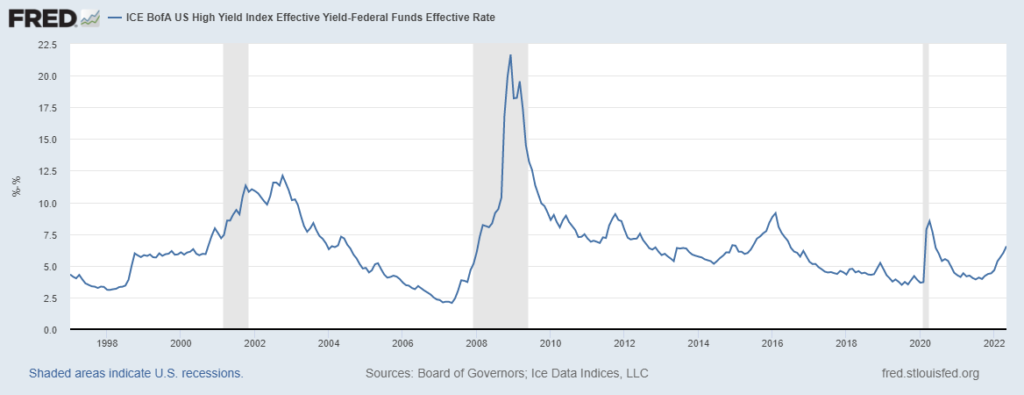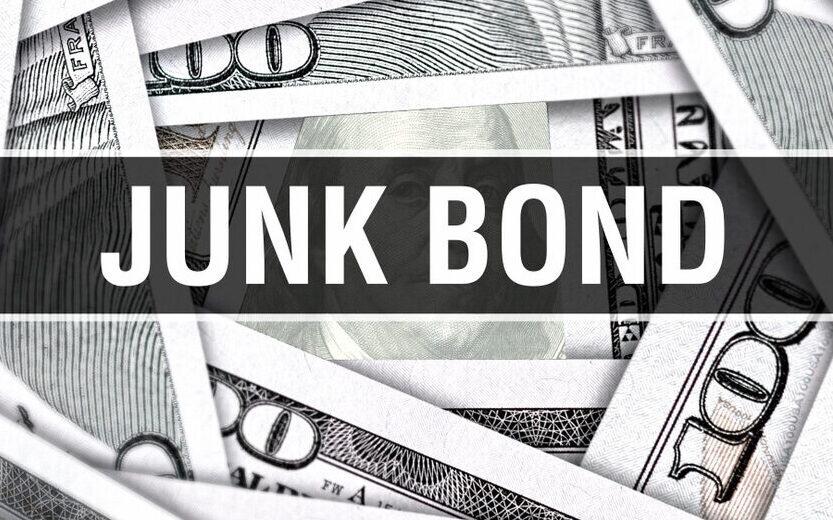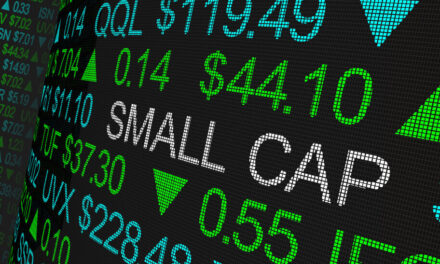Over the long run, junk bonds (i.e., high-yield bonds) tend to be poor investments for individual investors.
While hedge funds and institutional investors can own a diverse portfolio of bonds, individuals are limited to index funds.
They don’t have the resources to analyze the risks of the companies these bonds are for.
Junk Bonds: A Useful Risk Indicator
Looking back, junk bond indexes have offered the worst of stocks and bonds. In a bull market for stocks, junk bond funds underperform stocks.
When stocks turn down, junk bond funds often lose more than stocks, since the companies issuing junk bonds are the most likely to go bankrupt in a downturn.
Junk bonds could best serve as an indicator of the stock market’s relative risk level.
When risk is high, investors demand high rates of return. This pushes up junk bond yields, and interest rates move higher.
When risk is low, so are yields.
The chart below shows the yield on junk bonds. I subtracted the risk-free rate of return to focus on risk.
Junk Bond Yields on the Rise Again

Source: Federal Reserve.
Risk on the Rise
The current risk-adjusted yield is 6.5%, which is above the 25-year average value of 5.9%.
The yield is also rising. That tells us junk bond risk is rising.
The sharp rise in yields is warning of a potential recession. When the economy contracts, the number of junk bond defaults rises. That’s why the yield jumps. It compensates investors for the risk.
Right now, the market price indicates about 1 in 12 bonds is likely to default. In recessions, yields tend to rise until a 1 in 8 default risk is priced in.
Bottom line: This means now is not the time to reach for yield. Junk bond risks outweigh rewards for now.
When yields top 10%, some investors might be buyers. Prudent investors will buy stocks because stocks always beat junk in a bull market.
Click here to join True Options Masters.




